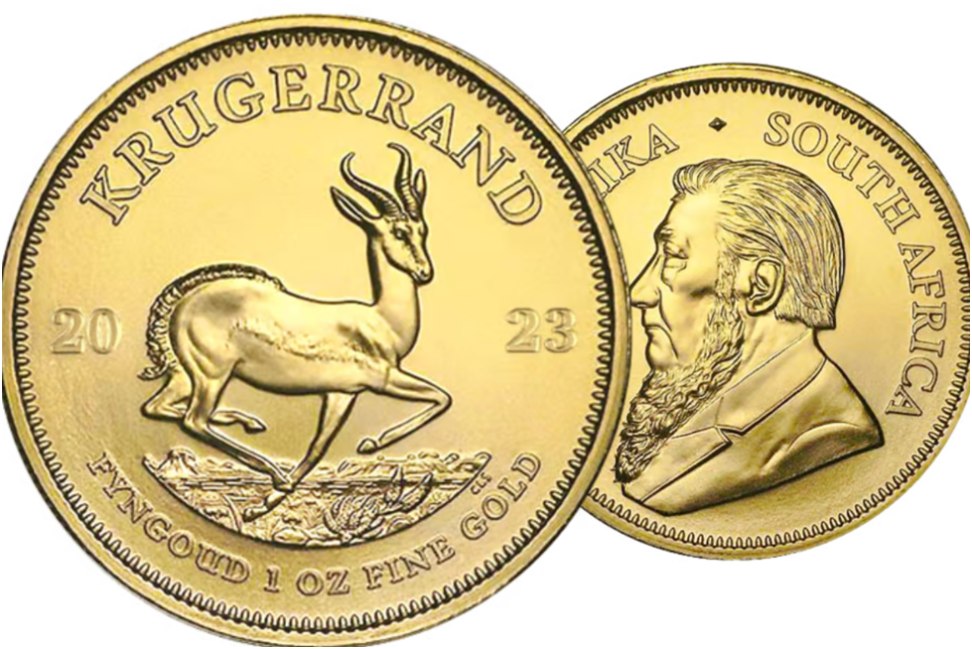The renowned South African Krugerrand gold coin transformed the contemporary bullion coin industry. The Krugerrand, being the first bullion currency to be traded globally, opened the door for other countries to produce their own gold bullion coins. Let’s examine this famous coin’s design, history, variants, and legacy.
History and Overview
In order to promote international commerce and investment in South African gold, the Krugerrand was established in 1967. It is made of 22-karat gold and comes in a handy 1-ounce shape. The back of the coin depicts a solitary springbok, which is the national animal of South Africa, while the obverse has a photo of former Boer commander and current president Paul Kruger.
Early Affects and Forerunners
Numerous sources, including a 1-ounce 22-karat gold coin produced by the Royal Mint in Pretoria prior to 1941, served as the model for the Krugerrand. Nonetheless, the 1960 Chamber of Mines 24-karat gold medallions with two springboks had perhaps a bigger effect. South African collectors saw these medallions as prototypes for the Krugerrand because of their restricted mintage.
Structure and Content
The South African Mint and the Rand Refinery worked together to create the design of the Krugerrand. 22-karat gold was used to make the coin, striking a balance between worth and durability. The coin’s broad recognition as a reliable bullion investment was facilitated by its distinctive composition.
Development and Worldwide Effect
The Krugerrand soon became well-known around the globe and was exchanged as the most valuable metal unit. Ninety percent of the world’s gold coin market was held by Krugerrands in 1980. During this period, fractional bullion coins in half-ounce, quarter-ounce, and tenth-ounce denominations were added to the Krugerrand.
Difficulties and Debates
The Krugerrand had difficulties during South Africa’s apartheid period. When the United States and other nations imposed sanctions and prohibited the coin’s import because of apartheid laws, the coin’s popularity began to decline in 1985. The Krugerrand remained popular and was created in spite of these obstacles.
Unique Problems and Innovations
The Krugerrand has had many special editions throughout the years, most notably the Gold Reef City Mint edition from 1987 to 1991. People were able to strike their own krugerrand gold coins on-site at this special mint, forging a personal connection with the production process.
To honor anniversaries and noteworthy events, as the 30th anniversary in 1997 and the 50th anniversary in 2017, special markings have also been added to the Krugerrand. The Krugerrand series became even more unusual and collectible with the release of these special versions.
Extension and Contemporary Revisions
In 2017, the Krugerrand commemorated its 50th anniversary by launching newKrugerrand gold coin
denominations: 50 oz, 5 oz, 2 oz, 1/20 oz, and 1/50 oz. The South African Mint also released platinum and silver Krugerrands for the first time, which increased the series’ attractiveness.
The Rugged Legacy of the Krugerrand
The South African Krugerrand has endured controversy and hardship throughout the years, yet it is still a well-known and esteemed gold currency. Over 54 distinct dates and a plethora of variations—including proofs and special issues—make the Krugerrand gold coinan exciting and difficult piece to acquire. The coin’s position in the realm of precious metals and numismatics is cemented as it develops further.
Have A Look :-

